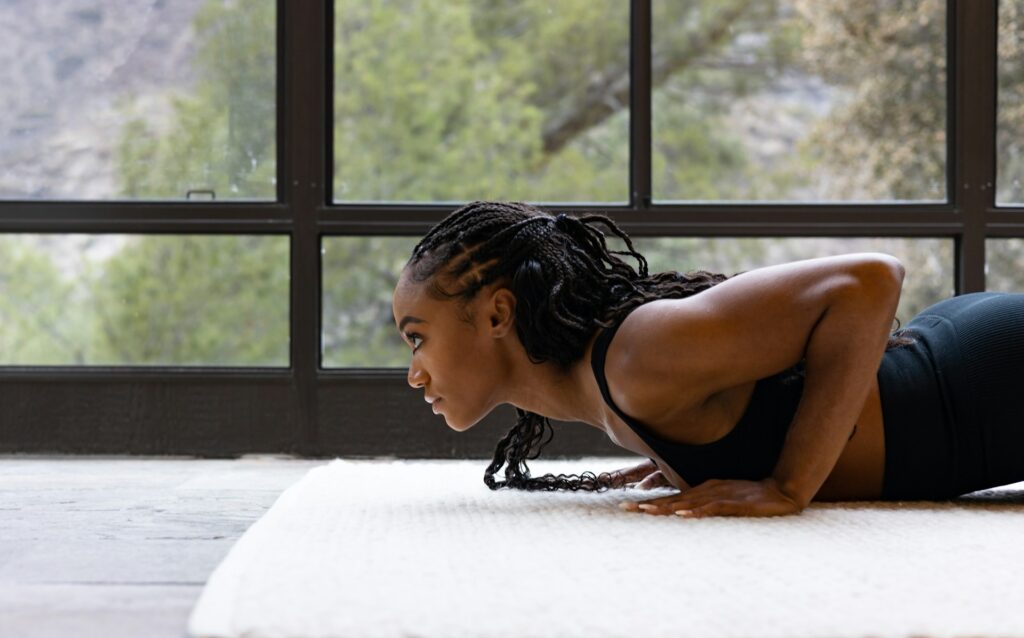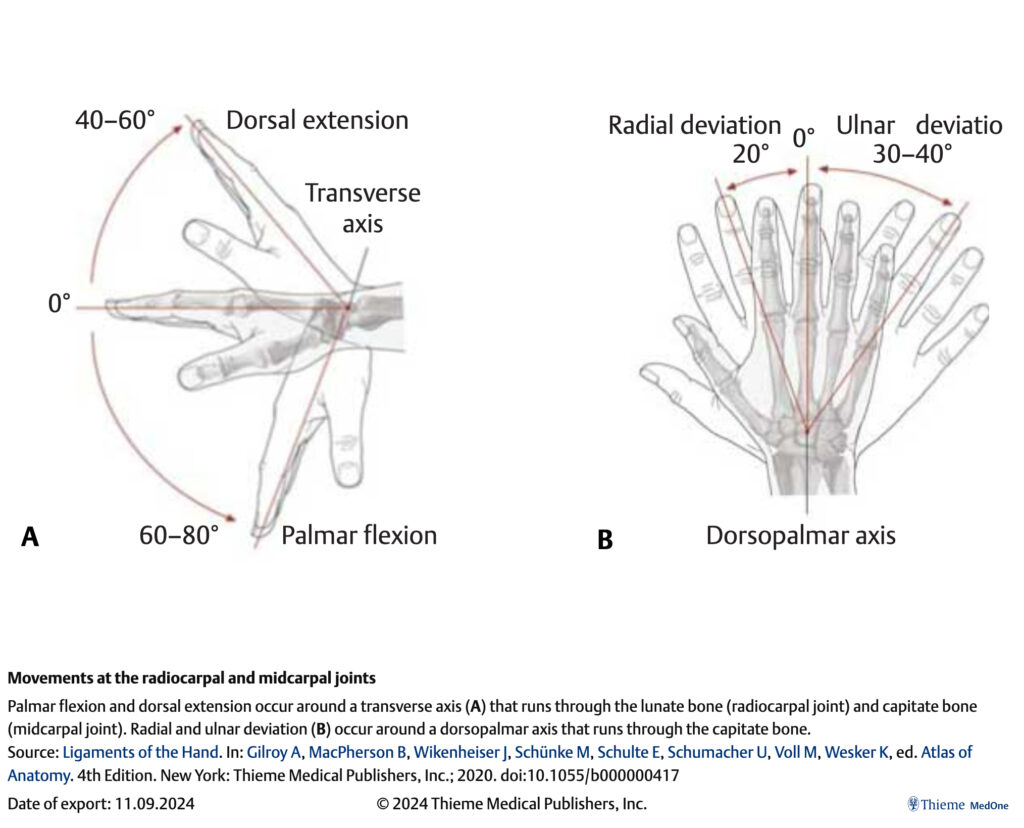If you’ve ever winced in downward dog or paused in plank because of wrist pain, you’re not alone! Wrist pain can sneak up in yoga and workouts and, if left unchecked, can hold you back from reaching your movement goals. But there’s good news: with some easy adjustments and a bit of wrist care, you can keep wrist pain at bay and focus on enjoying your practice.
In this post, I’ll break down why wrist pain happens in yoga and workouts, and share my top tips for building strong, pain-free wrists so you can flow, lift, and move without that annoying ache.
Why Does Wrist Pain Happen in Yoga and Workouts?
Wrist pain is super common in weight-bearing positions and repetitive exercises. Think about how many times in yoga you put your weight on your wrists—planks, downward dog, chaturangas, handstands—the list goes on! And in strength training, exercises like push-ups, planks, and even some shoulder work can put a lot of pressure on the wrists. When you aren’t prepared for these demands, it can lead to discomfort or, worse, injury.

5 Common Reasons for Wrist Pain in yoga
Here’s a breakdown of what might be causing your wrist pain:
1. Weak or Tight Muscles Around the Wrist and Forearm
Your wrists need both strength and flexibility to handle weight-bearing exercises comfortably. If they’re too tight or weak, they’ll struggle to support you. This is where targeted wrist exercises come in, helping to build both mobility and resilience over time.
If you’re a movement teacher, it’s important to meet students where they’re at and guide them from there.
If you’re a yoga practitioner, remember that you also have options in alignment—find what helps you feel safe, strong, and stable in each pose. Which leads us to our next point: Alignment.
2. Poor Alignment and Technique
In yoga, proper alignment can make all the difference. Misaligning the wrists—like placing them too far forward or back in a plank or downward dog—can create pressure points. Many yoga teachers cue students to align the wrists, shoulders, and elbows to distribute weight evenly and protect the wrists. However, for some students who lack mobility in wrist extension, this alignment may lead to discomfort or even pain, as they’re pushing past their current comfortable range of motion.
If this is your case, the drills in this video are designed to help increase wrist extension gradually, so that over time, you can bring your wrists closer to stacking under your shoulders without strain. Until then, I recommend that you walk your hands slightly forward, maintaining an extension angle that feels safe and manageable for you.

3. Repetitive Strain
Overdoing certain movements can irritate the wrist joints. If you’re doing lots of push-ups or a high-volume yoga practice, you’re placing repetitive stress on the wrists. Balance these exercises with some rest and variety in your movement.
4. Lack of Mobility and Warm-Up
Jumping into a wrist-intensive practice without warming up is like a gymnast attempting a triple somersault without prepping their wrists and joints. Just as they need mobility and control to protect their wrists during those intense moves, a few minutes of wrist warm-ups can make a big difference in preventing strain and supporting pain-free movement for us too.
5. Hyperextension and Overloading
Pushing the wrists into extreme angles, or letting them collapse under your body weight, can lead to hyperextension. It’s especially common in flexible people or those with hypermobile joints.
For hypermobile yogis, reaching their full range of motion is entirely natural and something they can and should do. However, it’s essential to have control at these end ranges to avoid joint injuries. That’s why strengthening drills at these end ranges are so beneficial—they help build stability and control, protecting the joints while allowing for full, safe movement.

Also read: 5 Tips to Start & Develop Your Home Yoga Practice
How to Build Strong, Pain-Free Wrists
The good news? Building wrist strength and mobility doesn’t have to take long. With a few daily exercises and some attention to alignment, you can keep your wrists happy and ready for anything. Here’s a quick routine you can try before any workout or yoga session:
- Wrist CARs (Controlled Articular Rotations) – 5 circles each direction.
Rotating the wrists slowly builds control and warms up all the tiny stabilizer muscles around the joint. Think of it as your wrist’s morning stretch!
- Palm PAILs and RAILs– 3 reps each side.
With fingers facing toward your knees, press into the fingertips, then release. Next, lift your palms slightly off the floor, feeling a stretch through the forearms. This move strengthens and releases the tension.
What Are PAILs and RAILs?
PAILs and RAILs are simple but powerful techniques to improve flexibility and build strength at the same time. Think of it like this: PAILs strengthen the muscles that are stretching, helping you move deeper into a stretch over time. RAILs do the opposite—they strengthen the muscles that pull you into the stretch. Together, they make your joints more stable and controlled at the edges of your flexibility, so you can move safely and confidently into your full range without risking injury.
- Palm Raises – 10 reps.
With your fingers spread and wrists under the shoulders, lift your palms up off the floor, keeping fingers grounded. Slowly lower them back down. This works those often-overlooked wrist extensors, giving you added support and strength over time.
Wrapping Up
Remember, wrist pain doesn’t have to be part of your practice! With the right strength, alignment, and mobility work, your wrists can become more resilient and pain-free. This small daily commitment to wrist care will help you keep showing up for your workouts, yoga flows, or whatever movement lights you up. And if wrist pain in yoga or while working out is a regular struggle, don’t hesitate to give these exercises a try or reach out with any questions!
Also check out these videos: Wrist warm drills before yoga or 15-minute Hands Free Yoga Flow to give your wrists a break
Have questions or your own tips for keeping your wrists pain-free? Drop a comment below, and let’s keep the conversation going!
If pain is holding you back or you’re looking to improve your overall strength and mobility, I’d love to help you get there. Whether you’re struggling with discomfort or simply want to build more resilience in your body, working with me 1-on-1 can provide personalized guidance and support.
Together, we’ll create a tailored plan that addresses your specific needs, helping you move more freely and safely—whether that’s through online coaching or in-person sessions. Reach out today, and let’s get started on your journey to pain-free movement!






+ show Comments
- Hide Comments
add a comment